Exploring the Cultural Charm of Chinese Hairpins
Are you familiar with Chinese hairpins? These were accessories frequently worn by people in ancient China. In China, the styles of hairpins are incredibly diverse, each carrying unique aesthetic interests and cultural significance. With the rising popularity of Hanfu culture, traditional hairpins have become essential accessories in Hanfu styling. More and more individuals are discovering this exquisite cultural feature. Would you like to learn more? This article will introduce you to it!
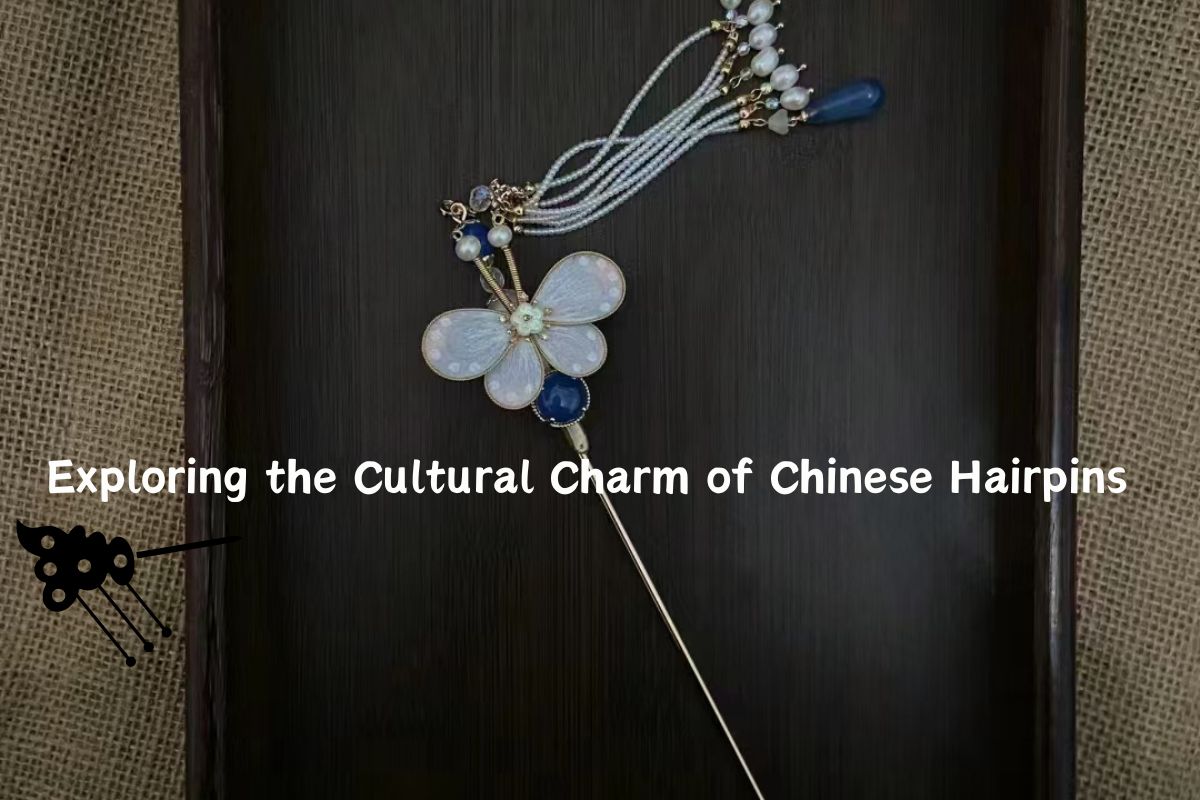
Unique Design Styles
Plain Hairpin发簪(fà zān)
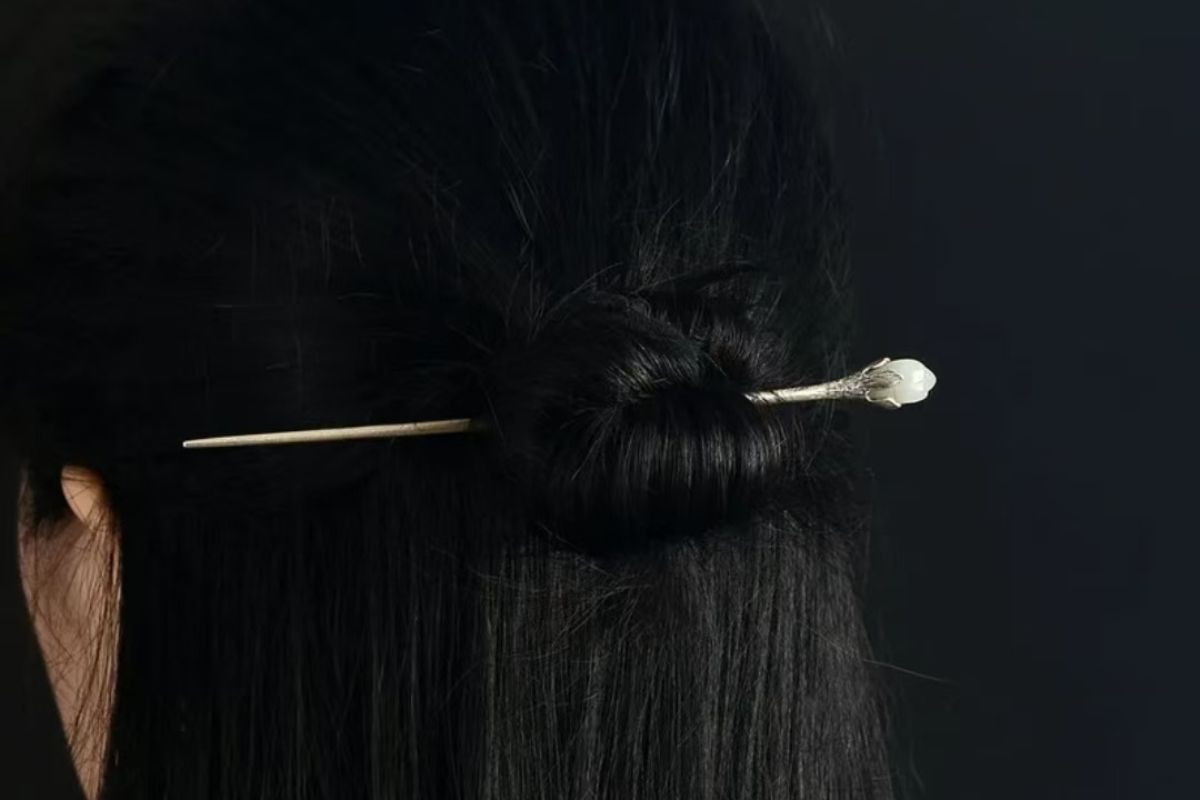
发簪(fà zān), noun, hairpin
Examples:
- She pinned her hair up with a hairpin.
她用发簪把头发别起来了。
tā yòng fā zān bǎ tóu fà bié qǐ lái le。 - The hairpin was decorated with pearls.
这个发簪上镶满了珍珠。
zhè ge fā zān shàng xiāng mǎn le zhēn zhū。
Imagine a hairpin without excessive decorations, much like a woman in simple attire and light makeup - understated yet far from ordinary. Usually crafted from silver or copper, its shape is either straight or gently curved, with a smooth surface and clean lines. The allure of this hairpin lies in showcasing the purest essence of metal, akin to a gentle breeze in nature, effortlessly touching the heartstrings. Wearing it adds a touch of understated elegance to everyday life.
Carved Hairpin
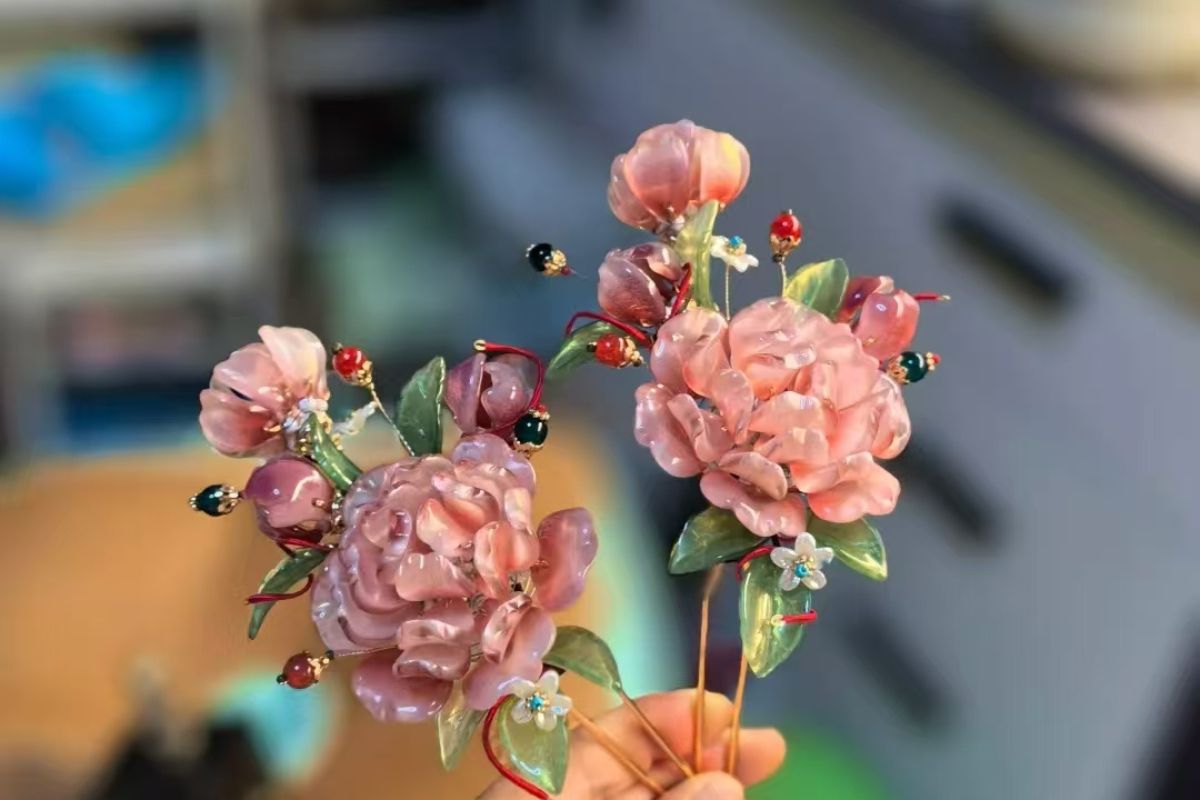
A carved hairpin is like wearing a garden of spring on your head. Craftsmen meticulously carve intricate patterns on the hairpin, depicting clouds, lotus flowers, peonies... Each petal, each leaf appears vividly lifelike. These patterns not only hold beauty but also carry auspicious meanings, embodying people's yearning for a happy life. Each engraved mark on a carved hairpin is a testament to the artisan's craftsmanship, narrating stories of beauty.
Jade Hairpin
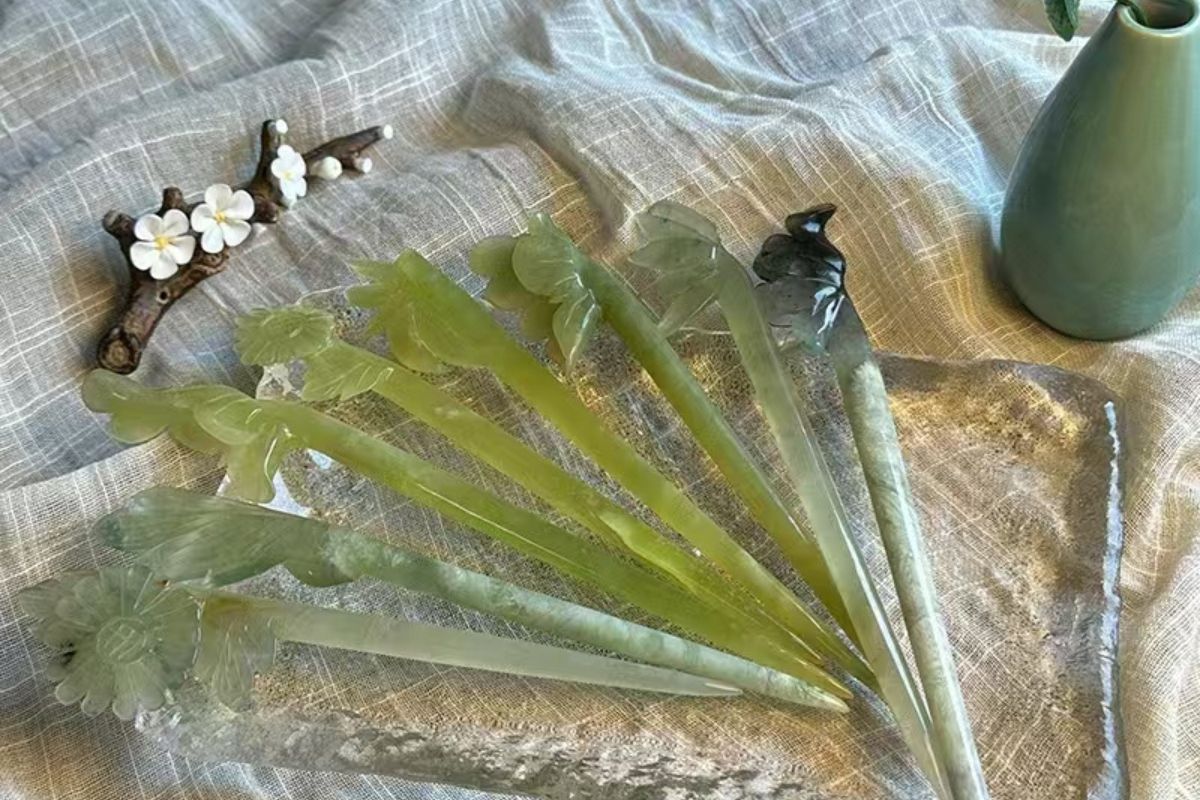
Jade has long been a symbol of purity and nobility. A jade hairpin seems to freeze a clear stream, transforming it into an ethereal spirit among the hair. Its delicate texture, cool touch, and subtle luster reflect the wearer's inner calmness and elegance. Each piece of jade is unique, thus each jade hairpin carries different stories and spiritual essence.
Rhythmical Hairpin
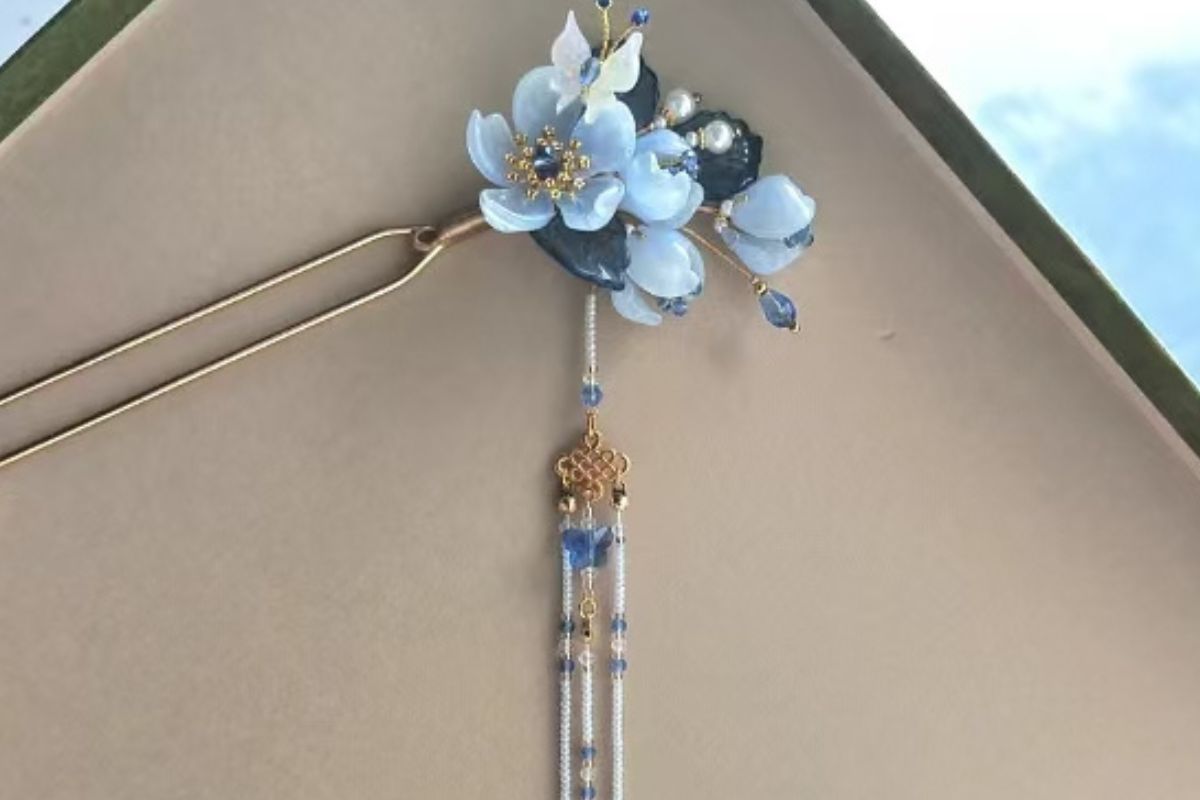
Imagine ancient noblewomen lightly stepping, with the unique rhythmical hairpin shining brightly in their hair头发(tóu fǎ). The name "Rhythmical Hairpin" stems from its ingenious design - the head of the hairpin is cleverly fashioned as a movable structure that gently sways with the pace of one's steps, resembling a dance among the strands, adding a touch of grace and delicacy.
头发 (tóu fǎ), noun, hair
Examples:
- She dyed her hair blonde.
她把头发染成了金黄色。
tā bǎ tóu fǎ rǎn chéng le jīn huáng sè。 - He has long hair.
他有一头长长的头发。
tā yǒu yì tóu cháng cháng de tóu fǎ。
These hairpins are usually intricate in craftsmanship, demanding not only aesthetic appeal but also ensuring balance and harmony when the head of the hairpin sways. Some rhythmical hairpins have a base of gold or silver, adorned with pearls, jade pieces, or tassels. As one walks, they produce a melodious tinkling sound, exuding a myriad of charm. Others incorporate elaborate floral and bird motifs into their design, with the flowers on the hairpin seeming to gently sway in the breeze with each step, vivid and poetic. Rhythmical hairpins are more than mere ornaments; they bear deep cultural significance, often seen as symbols of status and position, especially popular among courtly and aristocratic women. In ancient times, they not only enhanced the elegance of the wearers but also reflected the era's admiration for the grace and temperament of women.
Exquisite Craftsmanship
Material Selection and Design
Everything begins with selecting premium materials, whether it be warm jade, lustrous silver-copper, or dazzling gemstones, the choice of material determines the fundamental style of the hairpin. During the design phase, artisans contemplate patterns based on material characteristics, ranging from classical flora and fauna to abstract auspicious motifs, each design encompassing meaning, striving to harmonize with the wearer's temperament and the style of the Hanfu garments.
Carving and Forming
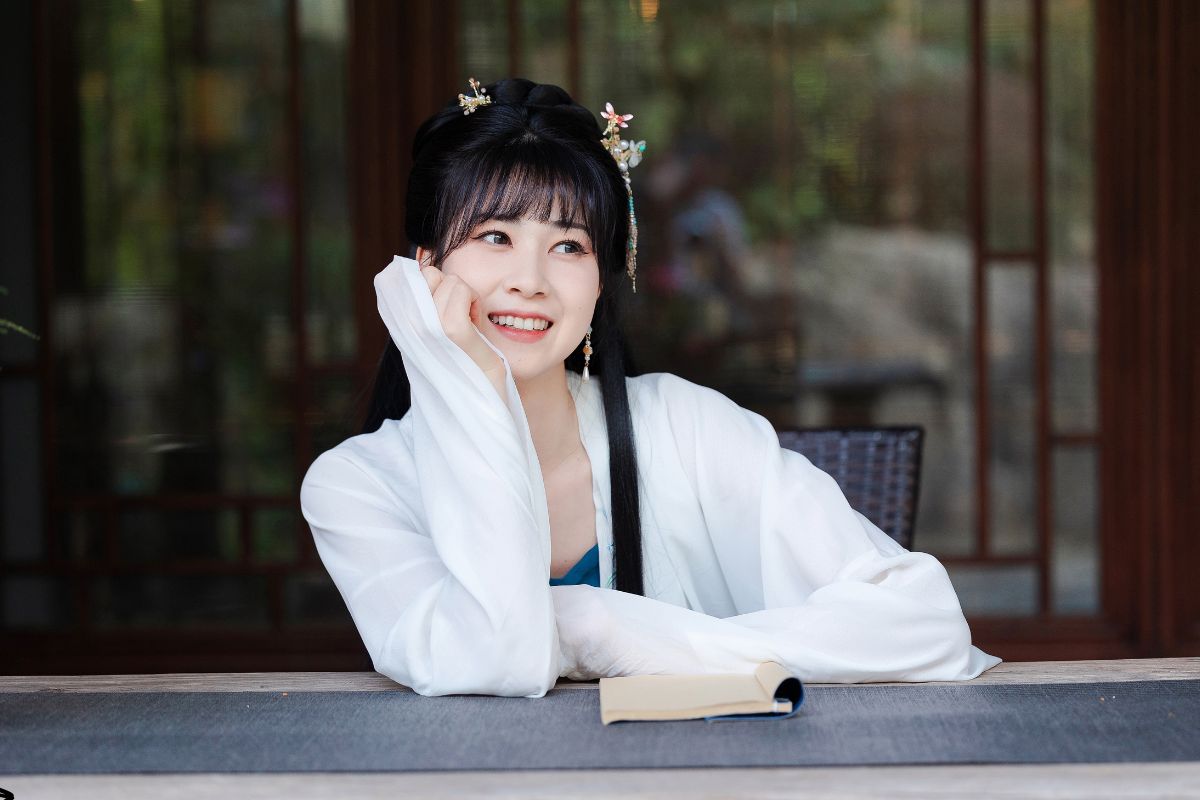
Taking the carved hairpin as an example, the metal material, after being melted and forged at high temperatures, is brought to life by the artisans' delicate carving technique, endowing the cold metal with vitality. Layers of petals, lifelike animals, every detail represents the pinnacle pursuit of beauty.
Inlay and Decoration
For those hairpins requiring gemstone or pearl inlays, artisans must meticulously measure and carefully secure each gemstone in its designated position, ensuring both solidity and aesthetics. Light dancing between the gemstones adds a touch of luxurious radiance to the hairpin.
Assembly and Adjustments

The production of complex structures like the rhythmical hairpin tests the skills and patience of artisans even more. The assembly of each movable part requires precise calculations to ensure flexible swaying during movement, maintaining stability, and perfect harmony with the flow of Hanfu garments.
Whether it be the simple plain hairpin or the splendid carved hairpin, each exudes unique charm, enhancing the wearer's temperament and taste. Every stage of production reflects the artisans' dedication and pursuit of perfection. Wearing a hairpin is not just about adornment; it is a continuation and respect for traditional culture, allowing people to experience the ancient beauty and grace in the revival of Hanfu culture.